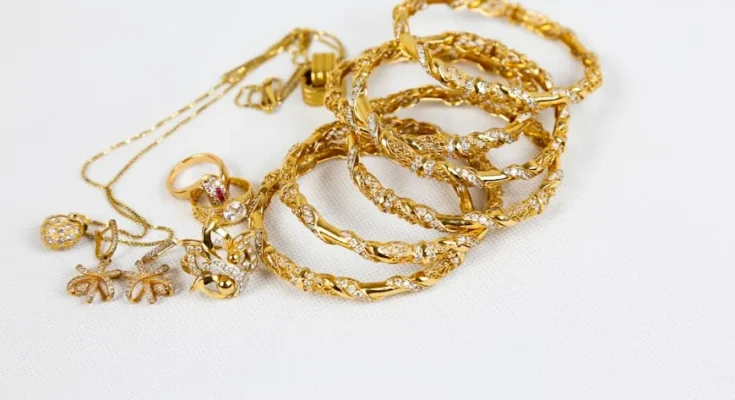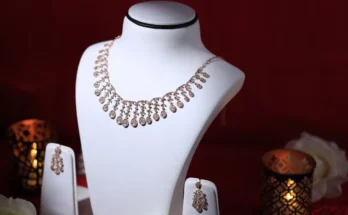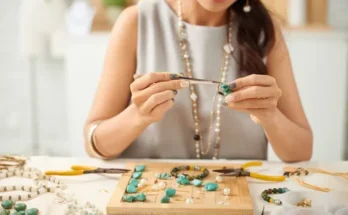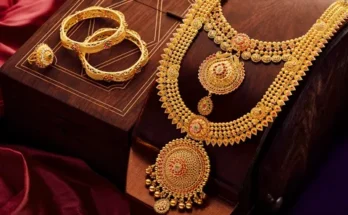More Than Decoration:
Jewellery is not just something we wear. It’s something we feel. It glimmers, yes—but its true shine comes from the stories it holds. Behind every ring, necklace, bangle, or brooch lies a tale of love, culture, memory, or transformation. To wear jewellery is to carry a piece of history, a whisper of identity, a mark of meaning.
Unlike fast fashion, jewellery endures. It passes from generation to generation. It’s gifted during life’s most significant moments—births, weddings, anniversaries, and even goodbyes. While trends shift and wardrobes evolve, a cherished piece of jewellery stays. It becomes part of who we are.
The Ancient Origins of Adornment:
Long before jewellery stores and red carpets, humans adorned themselves with materials from the earth. From shells and bones to metals and precious stones, early civilizations used jewellery as a symbol of power, status, and spiritual connection.
From Pharaohs to Temples
In Ancient Egyptian jewellery, jewellery wasn’t just ornamental—it was sacred. Amulets were believed to offer protection. Gold, seen as the flesh of the gods, was reserved for royalty. Similarly, in India, jewellery has always held spiritual significance. Nose rings, bangles, and anklets were worn not just for beauty but to represent cultural milestones, astrological beliefs, and even health benefits.
Jewellery in ancient societies wasn’t optional—it was essential. It told the world who you were, what you believed, and how you belonged.
- The Rise of Artisan Craftsmanship
As civilizations flourished, so did techniques. The art of jewellery-making became more refined, more intricate. In places like Italy and Greece, skilled artisans worked with metal, fire, and gems to create pieces that were both wearable and unforgettable.
This craftsmanship wasn’t just about aesthetics—it was about mastery. To create jewellery was to create legacy.
Personal Identity in Every Piece:
Today, jewellery remains one of the most personal forms of expression. Whether it’s the minimalist silver ring you never take off or a bold statement necklace that turns heads, what you wear says something deeply personal about you.
- Jewellery as a Reflection of Emotion
Engagement rings don’t just sparkle—they speak. They say, “I choose you.” A locket with a photo inside is more than gold—it’s a pocket of memory. A charm bracelet is like a diary you wear on your wrist.
Each piece becomes a marker in time. A celebration. A reminder. A secret. Jewellery is often the only physical object tied to a memory, making it infinitely more valuable than its market price.
- Cultural Identity and Tradition
In many cultures, jewellery defines tradition. South Asian brides are adorned from head to toe in gold not just for beauty, but to honor lineage and blessing. Maasai warriors wear beaded necklaces that signify age and community roles. Celtic knots in rings carry centuries of spiritual symbolism.
When you wear traditional jewellery, you wear your people’s story.
The Symbolism of Gemstones and Design:
From scarab amulets of Egypt to symbolic motifs across ancient designs, jewellery has always carried deep meaning. Discover more via the Smithsonian’s Human Origins Jewelry resource.
The Dance Between Art and Fashion:
Jewellery sits at the intersection of art and adornment. It holds the power to elevate an outfit or become the outfit itself. Designers today are blending materials, cultures, and philosophies to reimagine what jewellery can be.
- The Evolution of Design
From classic solitaires to futuristic 3D-printed pieces, jewellery design has undergone a revolution. Today’s pieces may be made from recycled ocean plastics, ethically sourced gemstones, or lab-grown diamonds.
Modern jewellery is no longer confined to rules. You can wear gold with silver, pair antique with avant-garde, or stack rings in unexpected ways. In this new era, self-expression is the only trend that matters.
- The Role of the Jewellery Artist
Behind every stunning piece is a designer who dreamed it into being. Jewellery artists aren’t just crafters—they’re storytellers. They sketch, solder, mold, and polish with purpose. Their goal isn’t just to decorate, but to evoke emotion, spark memory, and create legacy.
Owning a piece from a small artisan often means you’re carrying a piece of their soul, too.
Sustainability and Ethics in Modern Jewellery:
As with all industries, the jewellery world is reckoning with its impact. From environmental concerns tied to mining to the ethics of gemstone sourcing, today’s conscious consumer is asking: Where does my jewellery come from?
- The Rise of Ethical Jewellery
Brands around the world are turning toward transparency. Lab-grown diamonds—chemically identical to mined ones—are gaining popularity as ethical and eco-friendly alternatives. Recycled metals and vintage redesigns are on the rise. The new luxury is sustainability.
Buying jewellery now means supporting brands that align with your values, whether that’s zero waste, fair trade, or conflict-free sourcing. And as consumers demand better, the industry is beginning to shift.
- The Beauty of Secondhand and Heirlooms
There’s something uniquely powerful about jewellery with a past. Vintage pieces carry mystery. Heirlooms carry legacy. In a world obsessed with “new,” reimagining or reusing old jewellery is a radical act of respect—for history, for craftsmanship, and for the planet.
Your grandmother’s brooch may just be your most meaningful accessory.
The Emotional Currency of Jewellery:
We don’t just buy jewellery. We gift it. We inherit it. We lose it and grieve it. Jewellery holds emotional currency in a way few other possessions can.
- The Proposal and the Promise
An engagement ring isn’t about the size of the diamond. It’s about the moment someone said, “I want forever with you.” That little band becomes the physical form of a vow. It witnesses every chapter that follows.
The emotions tied to jewellery often outlive the metal itself. Even if a stone chips or a clasp breaks, the feeling it represents endures.
- Jewellery Through Life’s Milestones
A child receives a first pair of earrings. A teen gets a graduation ring. A new mother wears a pendant with her baby’s birthstone. Jewellery follows us through the milestones of life. It becomes the keepsake that holds the memory.
And when someone passes, we reach for their jewellery—not because it’s shiny, but because it still feels like them.
Wearing Your Story:
Ultimately, jewellery is about storytelling. Whether it’s a pair of diamond studs you bought with your first paycheck or a handmade bracelet from a street market while traveling—it holds a chapter of your life.
When you give it, you say, “This reminded me of you.”
When you wear it, you say, “This is a part of me.”
And when you pass it down, you say, “Don’t forget where you came from.”
Conclusion:
In a world of fleeting trends and fast consumption, jewellery remains timeless because it carries what can’t be replicated—emotion, memory, and meaning. It isn’t just about looking beautiful. It’s about feeling connected—to yourself, to your roots, and to the people and moments that matter most.
So the next time you fasten a necklace or slip on a ring, pause. Listen. Feel. You’re not just putting on jewellery.
You’re putting on a story.




